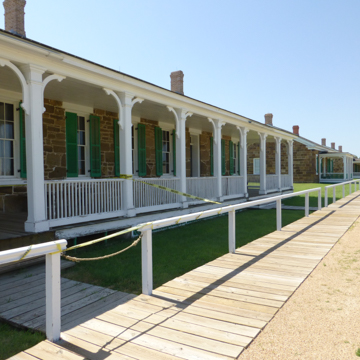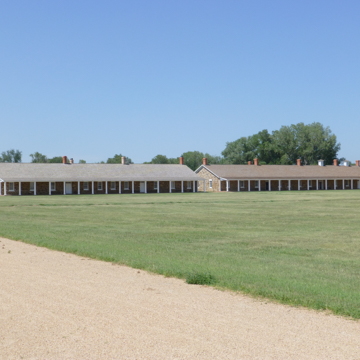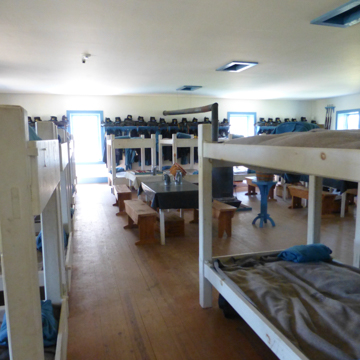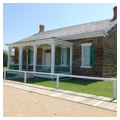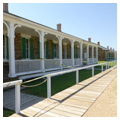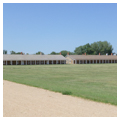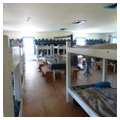In 1859, a contingent of soldiers was dispatched to the Santa Fe Trail near where the Pawnee Creek empties into the Arkansas River. The encampment was originally called Camp on Pawnee Fork, but was soon changed to Camp Alert. It housed soldiers charged with protecting travelers from Indian raids. The following year the settlement was moved three miles eastward to its present location and was re-named after the paymaster Colonel Benjamin F. Larned. The makeshift buildings erected on this site lasted only a few years before 191 civilian workers were dispatched to construct a more permanent encampment.
Between 1867 and 1868 the workers built fifteen single-story buildings around a square parade ground. Of these, six were wood-framed structures while nine had sandstone walls with wood-framed roofs. The stone buildings ringed the parade ground, and the frame buildings sat behind the more substantial structures. On the western side of the parade ground, the commanding officer’s residence was flanked by duplex officer residences. The north side was defined by two large barracks for enlisted men. The eastern side included a shop building and a commissary, and the southern edge was bounded by two storage buildings. The wood-framed buildings housed service functions, including laundry facilities and a hospital. A few years after completion, a circular blockhouse was added near the southeastern corner of the parade ground.
In addition to housing soldiers charged with protecting travelers on the Santa Fe Trail, in the 1860s Fort Larned also served as an Indian agency, distributing clothing and other necessities. However, conflicts between white settlers and natives worsened and in 1868 the federal government forcibly removed a majority of American Indians to designated territory in Oklahoma.
In the 1870s, the soldiers’ main mission was to protect the workers laying track for the Atchison, Topeka and Santa Fe Railroad. When construction was completed in 1878, Fort Larned was abandoned. Five years later the fort was declared surplus and sold into private hands to be used for a variety of ranch-related functions. The new owners modified the stone buildings and removed the frame ones.
In 1964 the government bought back the property and declared it a National Historic Site, under the jurisdiction of the National Park Service. At this time, park employees removed the ranch-related facilities and began restoring the remaining stone buildings to their original condition. One of the barracks buildings became a museum, and the other buildings were furnished to illustrate the way they might have appeared in the 1870s and 1880s. Providing a glimpse of life on the western frontier, the facility is free and open to the public.
NOTE: This entry was originally published in David Sachs and George Ehrlich, Guide to Kansas Architecture (Lawrence: University Press of Kansas, 1996). © 1996 by the University Press of Kansas.
References
Clary, David A., “Fort Larned,” Pawnee County, Kansas. National Register of Historic Places Inventory–Nomination Form, 1976. National Park Service, U.S. Department of the Interior, Washington, D.C.


